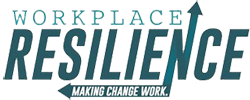 I was having a conversation with a friend the other day. As the discussion turned to the latest political happenings, I felt that welling up feeling in my body. That signal that I’m beginning to feel anxious and could easily be triggered by something shared in the conversation. And there it was……the very thing that I was fearful would be said, was said.
I was having a conversation with a friend the other day. As the discussion turned to the latest political happenings, I felt that welling up feeling in my body. That signal that I’m beginning to feel anxious and could easily be triggered by something shared in the conversation. And there it was……the very thing that I was fearful would be said, was said.
I didn’t say a word. I kept quiet and the conversation continued. I felt my heartrate stay elevated and that stressful feeling in my body stick around. Soon, it was time to go and I spent the whole car ride home upset about the discussion. When I got out of the car, I didn’t feel any better. Having an explosion of emotions didn’t aid me in releasing my frustration. In fact, I felt exactly the same.
That whole episode was not characteristic of my personality. Usually, I am able to listen, reflect and understand when another person shares their viewpoints. And usually, all without turning on the judgement. However, something had changed.
I felt that level of stress continuously throughout the following days. Granted, these are not normal times. Dealing with the changes of COVID and the uncertainty going forward, played into this feeling. Being bombarded with the latest news update, wasn’t helping the situation. And I realized, that I couldn’t even concentrate to accomplish simple tasks at work. I no longer had the ability to be creative. My brain just seemed way too overstimulated to allow the creative process to unfold.
In addition, I was worried all the time. My mind was proficient at finding the “perfect” thing to worry about hour after hour. It’s as if it was just searching for something to attach to and continue the worry cycle.
When stepping back from the situation, I realized that I needed to become more mindful and live more in the present. I needed to quiet my mind.
Mindfulness is the mental state achieved when you focus on being aware in the present moment, while calmly acknowledging and accepting one’s feelings, thoughts and body sensations. It’s not thinking about what happened in the past, and not focusing on what might transpire in the future. It’s living in the now. Although I had been mindful in my daily life in the past, I had lost my way the last couple months.
The constant bombardment of the latest politics, COVID updates, business struggles and racial tension had gotten me off track. I’m guessing that many leaders out there are also wrestling with the inability to be mindful and present. I can imagine many of you are struggling, like myself, with all the “what ifs” that could happen in the near future, with so much being up in the air. And when all this stimulation takes up too much brain space, you are much less productive.
So here are some suggestions to find more calm and mental clarity.
Take 5 minutes to start your day off on the right foot with meditation.
Set the timer for 5 minutes, get in a comfortable sitting position, and just focus on your breathing. Pay attention as you inhale through your nose, and slowly exhale through your mouth. Your brain will try to bounce around to other random thoughts and that is OK. Just keep with it and go back to the focused breathing. Make no judgments over the thoughts, just let the thoughts wash over you and let them leave your body. Over time, this will get easier and you will be able to increase your time.
Limit your Social Media and news access
Do you feel your stress level going up when you get on Social Media? It’s good to be informed and educated. Focus on receiving enough information to be educated on the world news. Recognize that line where you might be diving in headfirst and not coming out. For example, I worked hard today to have a work-out without checking my phone over and over for the latest update. Just make it a point to focus on the present task and not overload your brain with too much stimulation.
Learning how to be mindful is a process and takes time and hard work. It’s not something that you master in a day. However, learning this skill can help you gain self-control, emotional regulation, lower your heart rate and find your calm.
I could use a little of that right now.














